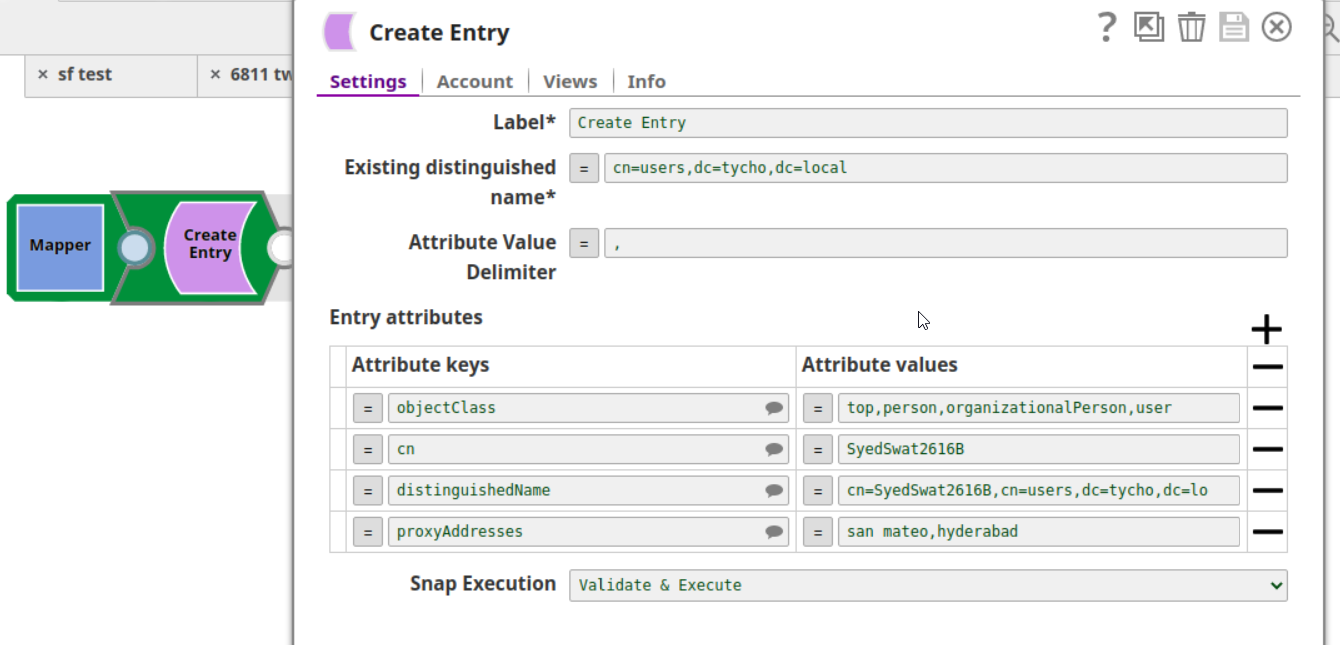On this Page
Snap type: | Write | |||||||
|---|---|---|---|---|---|---|---|---|
Description: | The Update Entry Snap updates an entry in Active Directory. An entry (user Account) can be updated in any Organizational Unit (OU), Domain Controller (DC) etc. The attributes of table will create on suggest based on the existing distinguished name into Active Directory. The table consists of all the fields that needs to be updated. To generate the suggested attributes into the table the existing distinguished name is required.
| |||||||
| Prerequisites: | [None] | |||||||
| Support and limitations: | Works in Ultra Task Pipelines. | |||||||
| Account: | This Snap uses account references created on the Accounts page of SnapLogic Manager to handle access to this endpoint. See Active Directory Basic Auth Account for information on setting up this type of account. | |||||||
| Views: |
| |||||||
Settings | ||||||||
Label | Required. The name for the Snap. You can modify this to be more specific, especially if you have more than one of the same Snap in your pipeline. | |||||||
Existing distinguished name | Required. The LDAP API references an LDAP object by its distinguished name (DN). A DN is a sequence of relative distinguished names (RDN) connected by commas. An RDN is an attribute with an associated value in the form attribute=value, normally expressed in a UTF-8 string format. The typical RDN attribute types include: DC = domainComponent, CN = commonName, OU = organizationalUnitName,O = organizationName, STREET = streetAddress, L = localityName,ST = stateOrProvinceName, C = countryName, UID = userid. This field is applicable only to existing users. If the user does not exist, create an entry using the Create Entry Snap first. Example: A distinguished name for an LDAP entry can be represented as: CN=AbcUser,CN=Users,DC=server,DC=company,DC=com. In this example, to refer to the entire user list, you can remove the initial attribute, CN=AbcUser. Default value: [None] You can also use special characters in the distinguished name. See the section Using Special Characters in Distinguished Name below. | |||||||
| Attribute Value Delimiter | Character or string to be used as delimiter to separate multiple values provided to the Attribute Value field. Example: Default value: [None] | |||||||
| Entry attributes | Required. The table of suggested attribute key-value pairs to create the entry. Consists of two fields:
| |||||||
| Attribute Key | Required. Attribute keys to create the entry.
Default value: [None] | |||||||
| Attribute Value | Required. Value of the attribute. Its expression.
Default value: [None] | |||||||
Entry attributes | Required. The table of attribute key-value pairs to update the entry. Attribute keys: The suggested attributes based on the provided Existing distinguished name property. | |||||||
| Pass through | Select to include the entire input data in the Snap's output. The Snap includes this data within the $original field in the output. Default value: Not selected | |||||||
Examples
